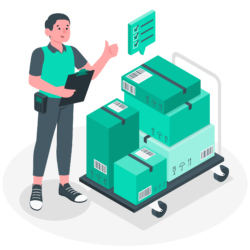Businesses often seek deeper insight is Gst sales purchase data help reveal trends, improve planning, and strengthen decision-making : Gst Sales Purchase Data Provider










Get Free Sample Format
DATA VENDOR Other Categories
-

WHOLESALERS DATABASE2 Products
-

RETAILERS DATABASE6 Products
-

PVT LTD COMPANIES DATABASE9 Products
-

MANUFACTURERS DATABASE10 Products
-

MACHINARY COMPANY DATABASE2 Products
-

INDUSTRY DATABASE18 Products
-

DISTRIBUTORS DATABASE5 Products
-

DEALERS DATABASE
-

COMPANY DATABASE7 Products
-

ALL INDUSTRIES DATABASE9 Products
In today’s fast-moving business world, information is power. One area where businesses often seek deeper insight is Gst sales purchase data provider. This data can reveal trends, improve planning, and strengthen decision-making. But at the same time, it also raises questions about access, usage, and compliance.
This blog will walk you through the concept in simple language. You’ll learn what it means, why businesses care about it, and how it connects with strategy and growth.
Understanding GST Sales and Purchase Data Provider
Before we go deeper, let’s break down the basics. GST (Goods and Services Tax) requires every registered business to record its sales and purchases. These records are submitted regularly through returns.
The sales data shows what a company has sold, while the purchase data shows what it has bought. Together, they create a full financial picture.
Now, when we talk about Gst sales purchases data provider, it usually means analyzing details that are not yours but belong to someone else in the market.
Why Companies Care About Gst sales purchase data provider
So, why does this matter? The answer is simple. Businesses operate in a competitive world. By studying Gst sales purchases data provider, they can:
Spot new opportunities in the market.
Understand demand patterns in different industries.
Learn about the buying habits of suppliers.
Keep an eye on competitor movement.
For example, if you notice that a rival is buying a huge quantity of raw material, you may guess that they are expanding production. That insight can help you adjust your own plans.
Data and Compliance Go Hand in Hand
While the idea sounds exciting, it’s important to remember that GST records are sensitive. Every business must protect its own records and follow the rules while studying the market.
Using Gst sales purchases data provider for analysis must always respect compliance and privacy. The GST system was designed to bring transparency, but it was not built to expose private details for unfair use.
How Businesses Use Gst sales purchase data of another company Trends
Companies do not just want raw numbers. They want stories behind the numbers. That is where data analysis plays a role. By looking at another company’s sales and purchase patterns, businesses can:
Compare seasonal growth.
Track industry-wide shifts.
Plan pricing and discounts more smartly.
Adjust supply chains to avoid risks.
Imagine you run a manufacturing unit. If you see that another company’s purchase data shows rising costs in raw materials, you can prepare early. This type of information allows businesses to stay one step ahead.
Challenges in Accessing Gst sales purchase data of another company
It is not always simple to get Gst sales purchases data of another company. The challenges include:
Privacy restrictions – Data is protected by law.
Accuracy issues – Not every dataset is updated in real time.
Complex formats – Raw GST data can be hard to understand.
Ethical concerns – Using someone else’s financial details must be done responsibly.
Because of these challenges, businesses often rely on summaries, reports, or indirect analysis rather than raw confidential records.
Benefits of Studying Market Data
Even with these challenges, the benefits cannot be ignored. When companies explore sales and purchase records from their industry, they unlock:
Better forecasting for demand and supply.
Stronger control over inventory.
Smarter negotiations with vendors.
Clearer understanding of competitor activity.
This is why discussions about Gst sales purchase datas of another company are becoming more common. Everyone wants to stay prepared for the future.
Practical Uses Beyond Competition
It’s not only about competing with rivals. The data also helps in many other ways:
Supplier analysis – Knowing what suppliers are selling to others helps businesses choose partners wisely.
Customer behavior – Tracking patterns reveals what end-users prefer.
Tax reconciliation – Cross-checking purchase and sales figures ensures compliance.
So, the data supports both growth and governance.
The Balance Between Curiosity and Responsibility
Exploring Gst sales purchase data of another company is like walking a fine line. On one side, you have the advantage of insights. On the other side, you must respect limits.
Businesses that succeed are the ones that balance curiosity with responsibility. They use insights without crossing ethical or legal lines.
How This Shapes Business Strategy
At the end of the day, every business wants to grow. Sales and purchase data, whether your own or another company’s, fuels that growth.
Here’s how it shapes strategy:
It makes planning future investments easier.
It highlights gaps where competitors are not focusing.
It helps set the right pricing at the right time.
It connects financial planning with real-world demand.
This is why the phrase Gst sales purchase data of another company is not just a technical line. It represents a tool for smarter strategy.
Looking Ahead
As technology grows, the way we view GST records will keep evolving. More automation, more tools, and more real-time updates will change how businesses work with data.
In the future, studying Gst sales purchase data of another company may become faster and more transparent. But rules and compliance will remain just as important.
Final Thoughts
Every business decision starts with information. While your own records are the first source, understanding others in the market adds another layer. The Gst sales purchase data of another company helps in building that bigger picture.
But businesses must never forget—data is powerful only when used wisely. Respect, ethics, and compliance should guide every step. If handled right, this information can unlock growth, improve efficiency, and create lasting success.
